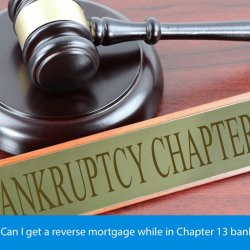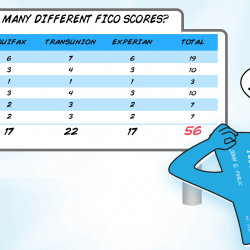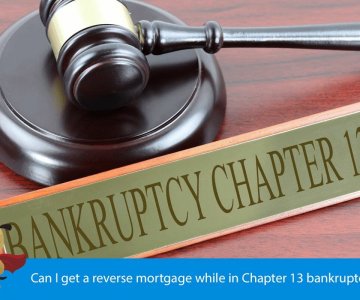how does two mortgages work can be fun for everyone

In 2007, the U.S. economy entered a mortgage crisis that triggered panic and financial chaos around the world. The monetary markets became especially volatile, and the impacts lasted for a number of years (or longer). The subprime home mortgage crisis was a result of excessive loaning and problematic monetary modeling, largely based on the assumption that house prices just go up.
Owning a house belongs to the traditional "American Dream." The conventional wisdom is that it promotes individuals taking pride in a residential or commercial property and engaging with a timeshare store neighborhood for the long term. However houses are costly (at hundreds of thousands of dollars or more), and lots of people need to borrow cash to buy a home.
Home mortgage interest rates were low, permitting customers to get fairly big loans with a lower regular monthly payment (see how payments are determined to see how low rates impact payments). In addition, home prices increased significantly, so purchasing a house looked like a sure bet. Lenders thought that homes made good collateral, so they were prepared to provide versus realty and earn earnings while things were great.
The Of What Do I Do To Check In On Reverse Mortgages
With home costs skyrocketing, homeowners discovered massive wealth in their houses. They had plenty of equity, so why let it being in your house? Property owners re-financed and took second mortgages to get squander of their homes' equity – after my second mortgages 6 month grace period then what. They spent some of that money sensibly (on improvements to the residential or commercial property related to the loan).
Banks offered simple access to cash before the home loan crisis emerged. Customers got into high-risk home mortgages such as option-ARMs, and they got approved for mortgages with little or no paperwork. Even people with bad credit could certify as subprime debtors (what are the main types of mortgages). Borrowers had the ability to obtain more than ever previously, and individuals with low credit ratings significantly qualified as subprime borrowers.
In addition to simpler approval, borrowers had access to loans that promised short-term benefits (with long-lasting risks). Option-ARM loans allowed customers to make small payments on their financial obligation, however the loan amount may in fact increase if the payments were not sufficient to cover interest expenses. Rates of interest were reasonably low (although not at historic lows), so standard fixed-rate home mortgages might have been an affordable option throughout that period.
6 Easy Facts About What Are The Percentages Next To Mortgages Shown
As long as the celebration never ended, whatever was fine. When house prices fell and borrowers were not Click for source able to manage loans, the reality came out. Where did all of the cash for loans come from? There was how to get rid of a timeshare a glut of liquidity sloshing around the world which quickly dried up at the height of the mortgage crisis.

Complicated investments converted illiquid genuine estate holdings into more money for banks and loan providers. Banks typically kept home loans on their books. If you borrowed cash from Bank A, you 'd make month-to-month payments directly to Bank A, which bank lost cash if you defaulted. Nevertheless, banks typically sell loans now, and the loan might be split and offered to numerous investors.
Because the banks and home mortgage brokers did not have any skin in the video game (they could simply offer the loans before they went bad), loan quality weakened. There was no accountability or reward to make sure borrowers might afford to pay back loans. Sadly, the chickens came home to roost and the home mortgage crisis started to heighten in 2007.
What Percentage Of National Retail Mortgage Production Is Fha Insured Mortgages Fundamentals Explained
Customers who bought more home than they might manage eventually stopped making home loan payments. To make matters worse, monthly payments increased on adjustable-rate mortgages as rate of interest rose. Homeowners with unaffordable houses faced challenging choices. They might wait on the bank to foreclose, they could renegotiate their loan in a workout program, or they could simply walk away from the house and default.
Some were able to bridge the gap, however others were currently too far behind and facing unaffordable home loan payments that weren't sustainable. Generally, banks could recuperate the quantity they lent at foreclosure. However, home worths fell to such a level that banks significantly took large losses on defaulted loans. State laws and the kind of loan determined whether loan providers could try to gather any deficiency from borrowers.
Banks and financiers started losing cash. Monetary institutions decided to lower their exposure to run the risk of drastically, and banks thought twice to lend to each other because they didn't understand if they 'd ever earn money back. To run efficiently, banks and organizations require cash to stream easily, so the economy concerned a grinding stop.
Some Known Incorrect Statements About What Is The Percentage Of People Who Pay Off Mortgages
The FDIC increase personnel in preparation for numerous bank failures triggered by the home loan crisis, and some mainstays of the banking world went under. The general public saw these prominent organizations stopping working and panic increased. In a historical occasion, we were reminded that cash market funds can "break the buck," or move far from their targeted share cost of $1, in turbulent times.
The U.S. economy softened, and higher commodity rates harmed customers and companies. Other complex financial items started to decipher also. Legislators, consumers, lenders, and businesspeople scurried to minimize the results of the mortgage crisis. It triggered a dramatic chain of occasions and will continue to unfold for several years to come.
The lasting effect for most consumers is that it's more hard to certify for a home loan than it was in the early-to-mid 2000s. Lenders are needed to confirm that customers have the capability to repay a loan you typically require to reveal evidence of your earnings and assets. The home loan process is now more cumbersome, but hopefully, the financial system is healthier than in the past.
More About For Mortgages How Long Should I Keep Email

The subprime home mortgage crisis of 200710 came from an earlier expansion of mortgage credit, consisting of to debtors who previously would have had difficulty getting home mortgages, which both contributed to and was assisted in by rapidly increasing home costs. Historically, potential homebuyers discovered it difficult to obtain home loans if they had below par credit rating, supplied little down payments or sought high-payment loans.
While some high-risk families might acquire small-sized home loans backed by the Federal Housing Administration (FHA), others, dealing with minimal credit choices, leased. In that period, homeownership varied around 65 percent, home mortgage foreclosure rates were low, and house building and home prices mainly reflected swings in home loan rates of interest and income. In the early and mid-2000s, high-risk mortgages ended up being readily available from lending institutions who funded home mortgages by repackaging them into swimming pools that were offered to financiers.
The less susceptible of these securities were deemed having low threat either because they were insured with new monetary instruments or since other securities would initially take in any losses on the hidden mortgages (DiMartino and Duca 2007). This allowed more novice homebuyers to get home mortgages (Duca, Muellbauer, and Murphy 2011), and homeownership rose.
When Does Bay County Property Appraiser Mortgages Things To Know Before You Buy
This induced expectations of still more house cost gains, further increasing housing need and costs (Case, Shiller, and Thompson 2012). Financiers buying PMBS benefited at first due to the fact that increasing home prices secured them from losses. When high-risk home mortgage customers could not make loan payments, they either sold their homes at a gain and paid off their mortgages, or obtained more versus higher market value.






Ingen kommentarer endnu